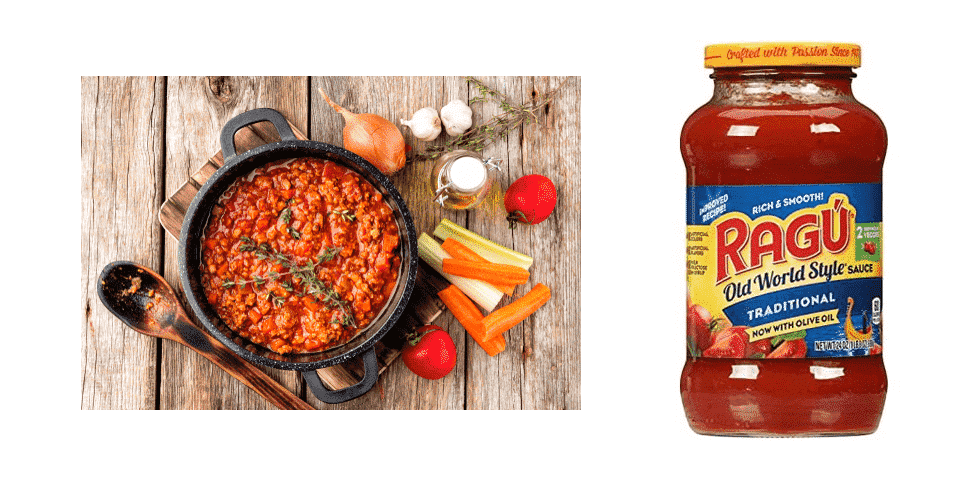
Food is the ultimate part of our lives, and it’s safe to say that food reflects culture and tradition. The cuisine’s origin can impact the flavor, way of cooking, and ingredients of the dish. Coming back to the point, Italian cuisine has become a common cuisine, and it’s one of the simplest dishes to make (pizza and pasta, you know!).
However, there are different sauces that can impact the flavor of Italian cuisines, such as Bolognese vs. ragu sauce. With this article, you will know the differences between both these sauces and their uses!
Bolognese vs Ragu
Bolognese Sauce
This is an Italian sauce which is natively called ragu all Bolognese. To begin with, this is the meat-based sauce that’s widely used in Italian cuisine. This sauce is perfect for preparing lasagna. This sauce is prepared by slow cooking, and there are various techniques used, such as braising, sweating, and sauteing.
There are various ingredients that go into this sauce, such as celery, carrots, soffritto of onion, beef (minced and/or chopped). In addition, it is made by adding fatty pork, milk, white wine, and tomato paste. Once all the ingredients are ready, there are simmered together to make a thick sauce. Outside Italy, it’s known to be a tomato-based sauce that has the addition of minced meat.
In Italy, it’s not used in spaghetti, and people outside Italy use this sauce for spaghetti. Traditionally, it is paired with tagliatelle (it’s made with soft wheat flour and eggs). This sauce can be added to different types of pasta, such as penne, fettuccine, and rigatoni. As far as spaghetti Bolognese is concerned, it’s basically a pasta dish that’s widely consumed outside Italy.
However, it’s not related to Italian cuisine at all (we wanted to clarify the difference). When it comes down to ragu, it’s a broad term for meat-based sauced, but Bolognese is the specific sauce. Bolognese sauce is a variant of ragu sauce and is one of the most important ones. It originates from Bologna, which is a city in Italy. It contains meat, and various types of meat can be used in this sauce.
Ragu Sauce
This is a widely-used and one of the most prominent pasta sauces used in Italian cuisines. This is a meat-based sauce, and it can be made by adding veal, land animals, pork, poultry, and fish. The meat is diced and minced to be added to the sauce. In addition, the tomatoes are added when the meat is minced and diced.
In addition to tomatoes, other vegetables are used in ragu sauce, such as celery, carrots, and soffritto. Some people also herbs, but herbs depend on different people and their taste preferences. The most important ingredient of this sauce is red wine. To illustrate, ragu sauce has a heavy and thick texture. This thick texture is achieved by adding cream or milk.
As far as the cream is concerned, it’s added to improve thickness and lighten the flavor. This sauce originates from the Emilia Romagna region from Italy, and it has been around since the late 18th century. This region was famous for meat stews, so this sauce is no surprise. There are different variants of this sauce. That’s because the Northern regions use more meat, and various meat types are used in this sauce.
The Southern version is made by cooking sauce with meat, but the meat was removed after cooking. As far as vegetables are concerned, they are sauteed to ensure they mix well in the sauce. Lastly, different types of liquids are used to make this sauce, such as broth, stock, milk, red wine, and tomato sauce. Some people use all these liquids, while some peopale are picky.
The Bottom Line
When it comes down to these Italian sauces, ragu sauce is a broader term, and Bolognese sauce is one of the variants. That being said, it’s pretty obvious that there are differences in these sauces. First of all, ragu sauce tends to be thicker as compared to Bolognese sauce. In addition, the tomato content is higher in ragu sauce.
Secondly, ragu sauce is made with red wine while Bolognese sauce has white wine, so there will be a difference in color and appearance. Generally, Bolognese sauce is suitable for wide and flat pasta, while ragu sauce is suitable for spaghetti-like and thin pasta. Last but not least, milk and cream are used in ragu sauce for thickening purposes while Bolognese sauce doesn’t!